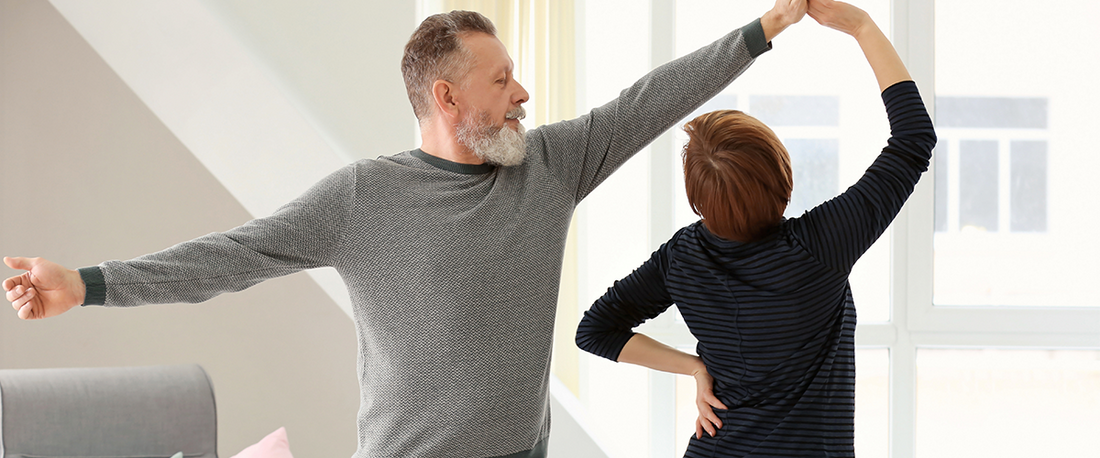“The one thing that can solve most of our problems,” said iconic funk and soul musician James Brown, “is dancing.” You better believe this Godfather of Soul knew what he was talking about, because dancing is, indeed, one sure way to solve a host of health issues. Swing it, tango to it, or just shimmy and shake, and you’ll not only give your muscles and your heart a workout, but you’ll boost your brain and your mood, as well. What about those achy joints?
Go ahead. Get your dancing shoes on. You’ll ease OA pain while strengthening the muscles that support your joints. Shoot for 45 minutes of dancing twice a week and you may find yourself walking faster while feeling less hip and knee discomfort. Consider taking a low-impact class, like ballroom dancing, Jazzercise Lite, or Zumba for older adults.
So what activity makes you feel better? Because whatever that is, you need to start doing it every day to battle arthritis woes. “The more you do each day, the better your knees will support you,” says Dr. Suzanne Salamon in the Harvard University publication Staying Healthy and Independent for Life.
So why not add something active to your daily routine? Any of the following will keep you footloose and fancy-free.
Balance training. To increase mobility, especially if you’ve had knee surgery, try balance exercises. Stand on one leg for 10 seconds, then switch sides. Work up to one minute on each leg. Do these near a counter in case you need to catch yourself. Also, practice standing up from a chair without using your hands.
Hand exercises. Strengthen your grip, increase hand mobility, and reduce finger and wrist pain with your own at-home therapy. Three times a week, take a rubber ball, spread your fingers wide around it, then roll them into a fist. Start with 10 repetitions and work up to 15.
Jumping. Sounds counterintuitive, but Finnish scientists discovered improvement in knee cartilage and mobility in postmenopausal women with mild arthritis in their knees who performed high-impact jumping exercises three times a week. Surprisingly, 12 months of jump training did not trigger pain or stiffness.
Strength and range-of-motion training. Don’t let arthritis in your hips stop you from working out. Both water and land-based exercises helped people with hip OA manage their pain, found a review of several studies. Moving, bending, and stretching a joint in different directions will keep it flexible, while working against weights or stretch bands will gently strengthen the muscles that support your joints. Experts say a 12-week program, working out three times a week should help.
Tai chi. The beautiful, flowing movements of this ancient martial art not only relieve stress and anxiety, they ease the pain and stiffness of osteoarthritis. Researchers looked at data from 33 studies and found that tai chi generally improved quality of life for people with OA, making it easier for them to get up and go.
And the Annals of Internal Medicine reports people with knee arthritis who did tai chi twice a week for 12 weeks had less pain and improved mobility — as much as people who underwent traditional physical therapy.
Walking. Experts agree walking is good for people with arthritis. You maintain your weight while improving your balance and heart health. Plus, walking builds bone strength and maintains bone density. Start by walking 10 minutes a day and work up to 35 to 40 minutes a day.
Yoga. People all over the U.S. practice yoga every day, and it’s especially helpful if you have OA in your knees, say experts. “Yoga may be especially well suited to people with arthritis because it combines physical activity with potent stress management and relaxation techniques, and focuses on respecting limitations that can change from day to day,” says Dr. Susan J. Bartlett, associate professor at Johns Hopkins School of Medicine in Baltimore.

